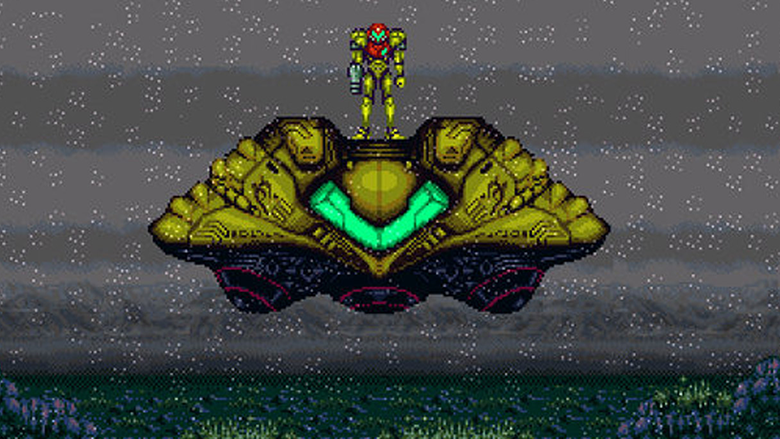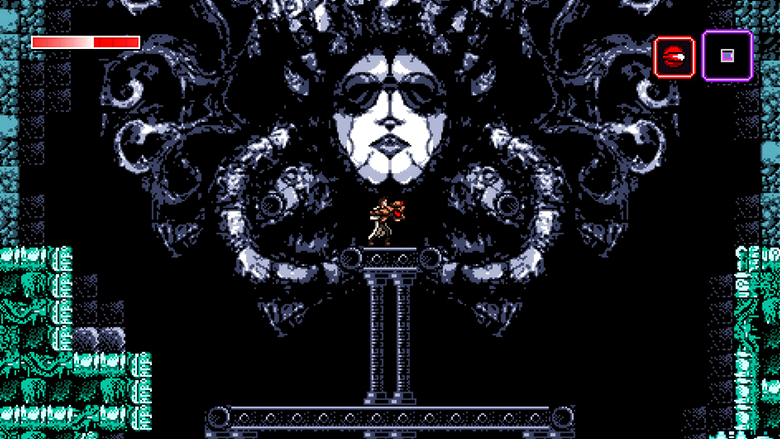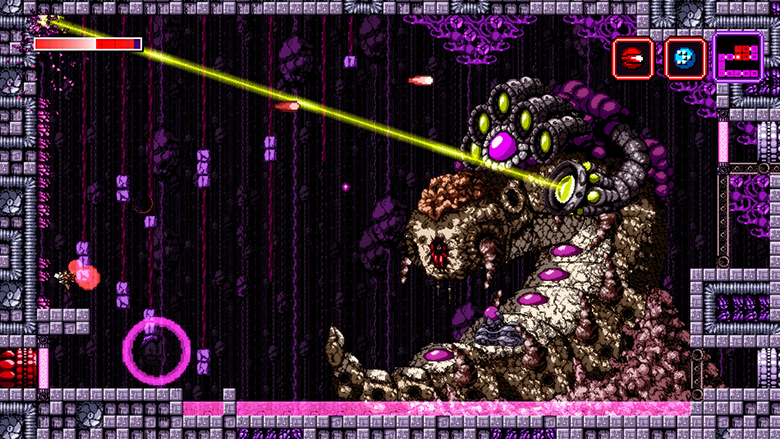Mark Brown, indie developer and editor of the Pocket Gamer resource, told why it is not necessary to stuff the player with detailed maps in metroidvaniya, as part of the Game Maker’s Toolkit video cycle. With the author’s permission, we have prepared a printed version of the material. We share.

Art to Axiom Verge
The genre of metroidvania is now at the peak of popularity. Indie games, from Ori and the Blind Forest to Xeodrifter, help resurrect a long-forgotten retro formula. It implies that the player wanders through locations resembling mazes, discovers new abilities and with their help overcomes obstacles that could not be passed before.
But recently I played a game that conveys the atmosphere of classic metroidvania better than others. She manages to keep the feeling that the hero is lost, wandering around unfamiliar places and simply has no idea what awaits around the next corner.
The game is called Axiom Verge.
When I first played it, I couldn’t say exactly what exactly makes it so similar to those good old Nintendo games. Surely there was something else besides the cool 8-bit art and the addict sky-fi setting.
Then I tried some other metroidvanias and understood everything. Although many of them stupidly copied Super Metroid, almost all ignored the most important point: the original game did not tell where to go.
Super Metroid
That game allowed the player to get lost and forced him to create his own cards – on paper or just in his head. And these simply guided every move with the help of obvious hints, pointers, or even lines drawn directly on top of the game map.
To be fair, it was the same in the last Metroid games. In Fusion and Zero Mission, you were directly told where to go. And I understand perfectly: what worked in 1994, when there was no Internet, will not necessarily work in 2016.
But it was the fact that the player could go wherever he wanted that partly made Super Metroid such a great game. Axiom Verge does the same thing. Games like Bloodborne also benefit from this. So in this text I will talk not only about side-scrollers that look like they were released on cassette.
We will talk about games that allow the player to pave the way himself, go wherever he wants and on any roads. And when you come across a new ability or a boss, it feels very cool, because you got there yourself. There was no giant glowing arrow on the screen. You did everything yourself.
But is he himself? After all, neither Axiom Verge nor Super Metroid really allow you to wander freely through the maze. They simply create the illusion of exploration, offering many doors that lead nowhere.
Axiom Verge
But what about the moments when you discover a new ability? When the brain rushes to think about how it will affect the already open locations – similar to how the film appears in a completely different perspective when a plot twist occurs? You’re the one who decides where to go back first, right?
Well, you have a certain choice, yes. But still – the game has ways to push you in the right direction and direct you to the next important location.
Perhaps this location is somehow different from the others.
In Super Metroid, there is an impressive-looking gargoyle in the room where you need to return after you get super-bouncy shoes. She is facing the door and because of her, the level will surely get stuck in her memory. You get the shoes and remember about the gargoyle. You go back and apply shoes there.
In another room, you get stuck between two closed gates for a few seconds. This brief moment of panic will surely be deposited in the brain, and you will want to come back, if only to show who is the boss here. Especially after you get a cool accelerator.
Homemade map for Super Metroid
Putting the area the player has to come to again in an environment that has not come across before is also a smart move, because a hint of something interesting will remain in the memory, which you will want to return to.
Another clever trick is to hint how to use it correctly immediately after the player receives the ability. Most projects in this genre simply copy the proven method of playing Metroid – locks the player with a new ability in a room and forces him to use it to get out.
But there is another way. For example, when you get an ice ray in Super Metroid, you have to freeze the beetle. This beetle looks exactly like insects that come across on the way to one of the locations the player needs. We add two and two, and everything becomes clear.
Sometimes in Axiom Verge it happens that there are more than one rooms to return to when you get the ability. But both lead to the same path. The game gives the player two opportunities to remember the room at once and thereby doubles his chances of getting on the right road.
Metroid uses navigation terminals to indicate the way. They tell you which areas to explore, but they don’t give away all the secrets.
Axiom Verge
And if you do get lost – these games in different ways reduce the number of places you can get to when you come back. Some of these methods are valid for a limited time. For example, in Super Metroid, once a player gets into a room with a puzzle, the doors close behind him. In this way, Nintendo does not allow the player to get into a situation where he does not know whether he can pass the trap with the abilities that he already has, or will have to return later.
If you are locked up until you understand what to do, there is no doubt that there is an opportunity to go further.
The same purpose is served by barriers that cover most of the map. Axiom Verge has one platform. You jump off it and do not immediately realize that it is too high and you will not get back until you get the next opportunity. This prevents you from getting lost and starting to wander back to the beginning of the game.
In Super Metroid there is a location from which you can’t get out until you get an ice ray. Because of this, you get stuck for a long time in a hellish place called Norfair. But nevertheless, exploring already familiar areas is not boring and not tedious. New abilities, such as a cat hook or accelerator, allow you to move faster, which makes it possible to find a short road or see various hidden elements of level design. For example, an extensive navigation network in Super Metroid, which makes it easier to move around.
Going back can also be more interesting – for example, when you go back to the Brinstar level, you find that one of the sections is stuffed with enemies. Or new player features can shorten the way back.
Super Metroid – Norfair
Here I note that in both Super Metroid and Axiom Verge I managed to get completely lost. But it’s not bad. It is useful for players to know that they may get a little lost – to feel satisfied when they do find their way. Like when you get stuck in the stuffy depths of Norfair for a time that seems like an eternity, and finally understand how to escape. You climb up the tunnel, literally break out with the help of a super bomb and get into a certain space – all in order to realize that you have returned to the very beginning of the game. But only now you are much stronger and more powerful and you can get where you couldn’t before.
It’s these narrative arcs that make the Metroid series so cool. And they work best when you know you might get lost. When you are encouraged to explore the game world and rewarded for having a good memory.
So despite the fact that this genre is very old, I would like to hope that due to the success of Axiom Verge (more than 90 thousand users on Steam, – approx. App2Top.ru) other developers will stop telling us where to go. And let you get a little lost.
Translated by Irina Smirnova
Source: Mark Brown’s YouTube Blog





